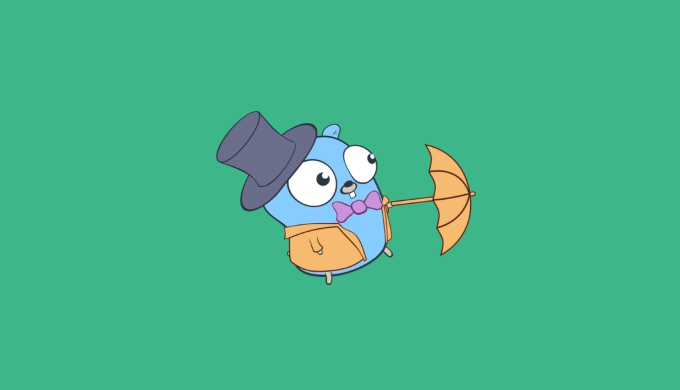The basic structure of Pipeline is a processing chain composed of multiple stages. Each stage communicates through channel and data flows in turn. The first stage generates data; the second stage processes data; the third stage outputs results. For example: generate numbers → calculate squares → output results. Three points to be noted when designing a robust pipeline: 1. Control the number of goroutines to avoid resource exhaustion, such as using a fixed number of workers to perform tasks concurrently; 2. Correctly close the channel to avoid deadlocks, the sender closes the channel, the receiver does not close, and when more senders are sent, you need to coordinate the closing time; 3. Use context to control the life cycle, which is used to exit all goroutines by error or timeout. Common problems include missing channel to cause goroutine leakage, uncontrolled concurrency to cause OOM, repeated channel to cause panic, and sequential dependence to damage logic. Applicable scenarios include data conversion pipelines, batch network requests, and background task queues. Mastering the coordination of goroutine, channel and context can build an efficient and stable pipeline.

In Go language, the pipeline pattern is a common programming pattern that uses goroutine and channel to implement concurrent task pipeline processing. It achieves an efficient concurrency process by splitting the task into stages, each phase being processed in parallel by one or more goroutines and passing the data to the next stage in turn through the channel.

This model is particularly suitable for scenarios where large amounts of data are processed in stages, such as file processing, network request flow, data conversion, etc.

What is the basic structure of pipeline?
Pipeline is essentially a processing chain consisting of multiple stages:
- Communication between stages through channel
- There can be multiple goroutines per stage to execute concurrently
- Data flows from one stage to another like water flow
A simplest example is: Generate data -> Process data -> Output results

// Stage 1: Generate the number func gen(nums ...int) <-chan int {
out := make(chan int)
go func() {
for _, n := range nums {
out <- n
}
close(out)
}()
return out
}
// Stage 2: Calculate the square func square(in <-chan int) <-chan int {
out := make(chan int)
go func() {
for n := range in {
out <- n * n
}
close(out)
}()
return out
}You can use it in series like this:
c := gen(2, 3)
squared := square(c)
for result := range squared {
fmt.Println(result)
}How to design a robust pipeline?
Building a practical pipeline is not just as simple as writing a few functions, but also the following points need to be considered:
1. Control the number of goroutines to avoid resource exhaustion
Do not start a goroutine for each task. Limit the number of concurrency, otherwise it may cause memory explosions or system stuttering.
func worker(id int, jobs <-chan int, results chan<- int) {
for j := range jobs {
fmt.Println("worker", id, "processing", j)
time.Sleep(time.Second)
results <- j * j
}
}Then use a fixed number of goroutines to consume jobs:
jobs := make(chan int, 100)
results := make(chan int, 100)
for w := 1; w <= 3; w {
go worker(w, jobs, results)
}2. Close the channel correctly to avoid deadlocks
- Only the sender is responsible for closing the channel
- The receiver should not try to close the channel
- When multiple senders, the shutdown time needs to be coordinated
3. Use context to control life cycle
If your pipeline is running in an HTTP request or background task, it is recommended to introduce context.Context to exit all goroutines in advance if an error or timeout occurs.
ctx, cancel := context.WithCancel(context.Background())
defer cancel()
// Listen to ctx.Done() at a certain stage
select {
case <-ctx.Done():
Return
case ch <- data:
}Frequently Asked Questions and Precautions
Missing channel causes goroutine to leak
If you forget to close the channel, the receiver will wait, causing the program to fail to end normally.No control over concurrency results in resource exhaustion
Especially when processing large amounts of data, OOM may be triggered without limiting the number of goroutines.Repeat the channel to close repeatedly incorrectly
Repeated closing of the channel is not allowed in Go, otherwise it will be panic.The issue of order dependency
If a certain stage of the pipeline must be executed in sequence, it cannot be parallelized at will, otherwise it will destroy the logic.
What scenarios are applicable to Pipeline mode?
- Data conversion pipeline (such as log analysis, image processing)
- Batch network requests (concurrent pull API data)
- Background task queue (task processing in stages)
Basically that's it. Master the cooperation of goroutine channel and the context controls the life cycle, you can write an efficient and stable pipeline.
The above is the detailed content of What is the pipeline pattern for concurrency in golang. For more information, please follow other related articles on the PHP Chinese website!

Hot AI Tools

Undress AI Tool
Undress images for free

Undresser.AI Undress
AI-powered app for creating realistic nude photos

AI Clothes Remover
Online AI tool for removing clothes from photos.

Clothoff.io
AI clothes remover

Video Face Swap
Swap faces in any video effortlessly with our completely free AI face swap tool!

Hot Article

Hot Tools

Notepad++7.3.1
Easy-to-use and free code editor

SublimeText3 Chinese version
Chinese version, very easy to use

Zend Studio 13.0.1
Powerful PHP integrated development environment

Dreamweaver CS6
Visual web development tools

SublimeText3 Mac version
God-level code editing software (SublimeText3)

Hot Topics
 What are the implications of Go's static linking by default?
Jun 19, 2025 am 01:08 AM
What are the implications of Go's static linking by default?
Jun 19, 2025 am 01:08 AM
Go compiles the program into a standalone binary by default, the main reason is static linking. 1. Simpler deployment: no additional installation of dependency libraries, can be run directly across Linux distributions; 2. Larger binary size: Including all dependencies causes file size to increase, but can be optimized through building flags or compression tools; 3. Higher predictability and security: avoid risks brought about by changes in external library versions and enhance stability; 4. Limited operation flexibility: cannot hot update of shared libraries, and recompile and deployment are required to fix dependency vulnerabilities. These features make Go suitable for CLI tools, microservices and other scenarios, but trade-offs are needed in environments where storage is restricted or relies on centralized management.
 How do I create a buffered channel in Go? (e.g., make(chan int, 10))
Jun 20, 2025 am 01:07 AM
How do I create a buffered channel in Go? (e.g., make(chan int, 10))
Jun 20, 2025 am 01:07 AM
To create a buffer channel in Go, just specify the capacity parameters in the make function. The buffer channel allows the sending operation to temporarily store data when there is no receiver, as long as the specified capacity is not exceeded. For example, ch:=make(chanint,10) creates a buffer channel that can store up to 10 integer values; unlike unbuffered channels, data will not be blocked immediately when sending, but the data will be temporarily stored in the buffer until it is taken away by the receiver; when using it, please note: 1. The capacity setting should be reasonable to avoid memory waste or frequent blocking; 2. The buffer needs to prevent memory problems from being accumulated indefinitely in the buffer; 3. The signal can be passed by the chanstruct{} type to save resources; common scenarios include controlling the number of concurrency, producer-consumer models and differentiation
 How does Go ensure memory safety without manual memory management like in C?
Jun 19, 2025 am 01:11 AM
How does Go ensure memory safety without manual memory management like in C?
Jun 19, 2025 am 01:11 AM
Goensuresmemorysafetywithoutmanualmanagementthroughautomaticgarbagecollection,nopointerarithmetic,safeconcurrency,andruntimechecks.First,Go’sgarbagecollectorautomaticallyreclaimsunusedmemory,preventingleaksanddanglingpointers.Second,itdisallowspointe
 How can you use Go for system programming tasks?
Jun 19, 2025 am 01:10 AM
How can you use Go for system programming tasks?
Jun 19, 2025 am 01:10 AM
Go is ideal for system programming because it combines the performance of compiled languages ??such as C with the ease of use and security of modern languages. 1. In terms of file and directory operations, Go's os package supports creation, deletion, renaming and checking whether files and directories exist. Use os.ReadFile to read the entire file in one line of code, which is suitable for writing backup scripts or log processing tools; 2. In terms of process management, the exec.Command function of the os/exec package can execute external commands, capture output, set environment variables, redirect input and output flows, and control process life cycles, which are suitable for automation tools and deployment scripts; 3. In terms of network and concurrency, the net package supports TCP/UDP programming, DNS query and original sets.
 How do I call a method on a struct instance in Go?
Jun 24, 2025 pm 03:17 PM
How do I call a method on a struct instance in Go?
Jun 24, 2025 pm 03:17 PM
In Go language, calling a structure method requires first defining the structure and the method that binds the receiver, and accessing it using a point number. After defining the structure Rectangle, the method can be declared through the value receiver or the pointer receiver; 1. Use the value receiver such as func(rRectangle)Area()int and directly call it through rect.Area(); 2. If you need to modify the structure, use the pointer receiver such as func(r*Rectangle)SetWidth(...), and Go will automatically handle the conversion of pointers and values; 3. When embedding the structure, the method of embedded structure will be improved, and it can be called directly through the outer structure; 4. Go does not need to force use getter/setter,
 What are interfaces in Go, and how do I define them?
Jun 22, 2025 pm 03:41 PM
What are interfaces in Go, and how do I define them?
Jun 22, 2025 pm 03:41 PM
In Go, an interface is a type that defines behavior without specifying implementation. An interface consists of method signatures, and any type that implements these methods automatically satisfy the interface. For example, if you define a Speaker interface that contains the Speak() method, all types that implement the method can be considered Speaker. Interfaces are suitable for writing common functions, abstract implementation details, and using mock objects in testing. Defining an interface uses the interface keyword and lists method signatures, without explicitly declaring the type to implement the interface. Common use cases include logs, formatting, abstractions of different databases or services, and notification systems. For example, both Dog and Robot types can implement Speak methods and pass them to the same Anno
 How do I use string functions from the strings package in Go? (e.g., len(), strings.Contains(), strings.Index(), strings.ReplaceAll())
Jun 20, 2025 am 01:06 AM
How do I use string functions from the strings package in Go? (e.g., len(), strings.Contains(), strings.Index(), strings.ReplaceAll())
Jun 20, 2025 am 01:06 AM
In Go language, string operations are mainly implemented through strings package and built-in functions. 1.strings.Contains() is used to determine whether a string contains a substring and returns a Boolean value; 2.strings.Index() can find the location where the substring appears for the first time, and if it does not exist, it returns -1; 3.strings.ReplaceAll() can replace all matching substrings, and can also control the number of replacements through strings.Replace(); 4.len() function is used to obtain the length of the bytes of the string, but when processing Unicode, you need to pay attention to the difference between characters and bytes. These functions are often used in scenarios such as data filtering, text parsing, and string processing.
 How do I use the io package to work with input and output streams in Go?
Jun 20, 2025 am 11:25 AM
How do I use the io package to work with input and output streams in Go?
Jun 20, 2025 am 11:25 AM
TheGoiopackageprovidesinterfaceslikeReaderandWritertohandleI/Ooperationsuniformlyacrosssources.1.io.Reader'sReadmethodenablesreadingfromvarioussourcessuchasfilesorHTTPresponses.2.io.Writer'sWritemethodfacilitateswritingtodestinationslikestandardoutpu






